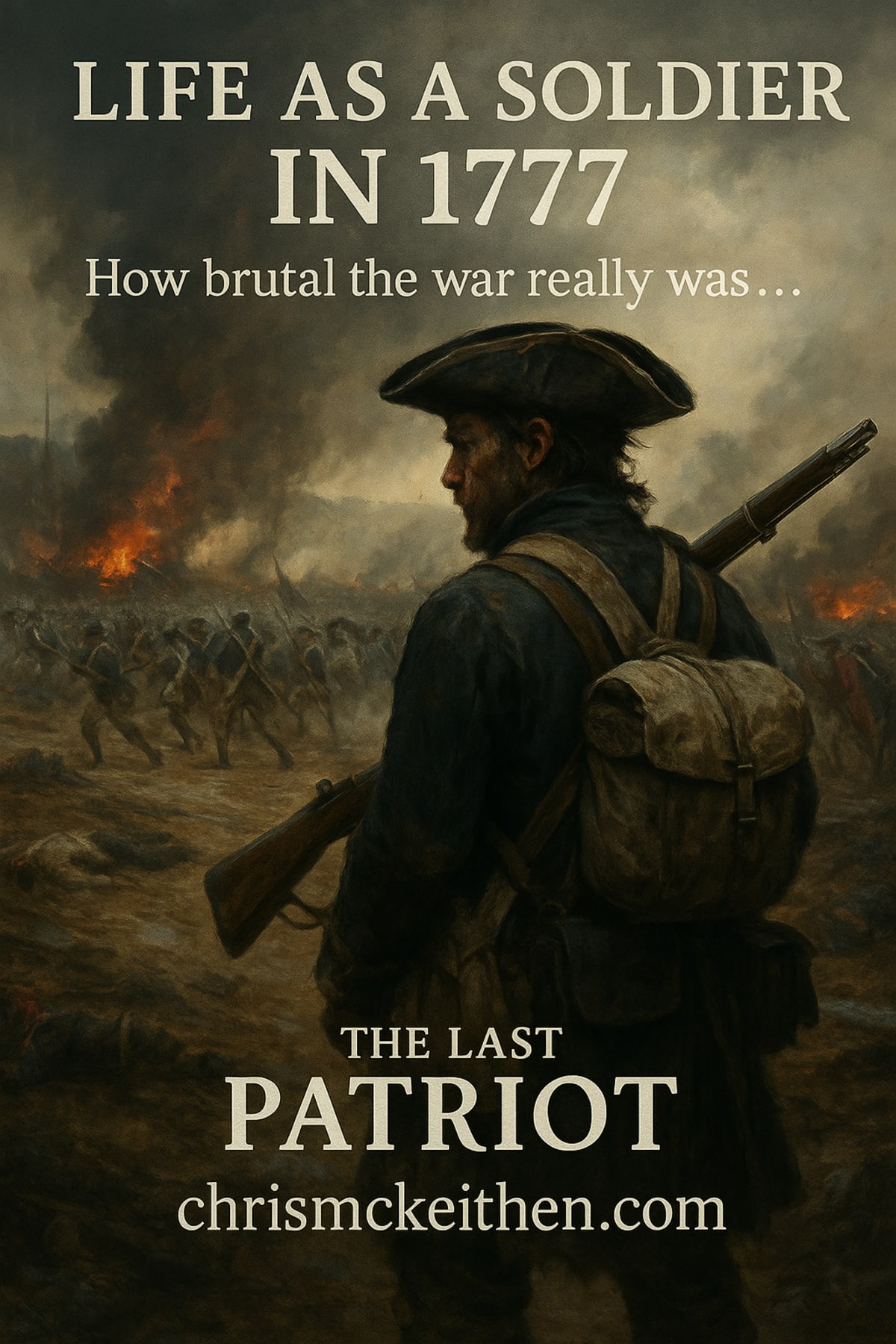Life as a soldier in 1777 was brutal beyond what most of us imagine. Imagine waking before dawn, fastening fifty pounds of gear — musket, powder, blankets — and marching through mud, rain, and frozen ground toward Saratoga. The 4th New York Regiment had to push north toward that campaign, part of Burgoyne’s advance, knowing that the fate of the Revolution might hinge on their success.
Men marched through the dense forests of upstate New York, trudging through slush and swamp, their shoes soaked, their clothing clinging to wet skin. The cold in the Hudson Highlands would bite deeper than a musket ball. Rations were meager — when they arrived at all. Many nights, soldiers gnawed on stale bread or hunted for squirrels, praying a stray deer would cross their path. Disease — smallpox, dysentery, “camp fever” — stalked the lines. More died from sickness than from bullets.
One night, a camp in the cold hills near Bemis Heights (a key part of the Saratoga battles) was struck by illness. Men weakened by hunger and exposure collapsed in rows; surgeons lacked tools, let alone medicine. Some amputations were done by candlelight in the snow.
At Saratoga itself — fought in September and October 1777 — commanders like Horatio Gates, Benedict Arnold, and Johann de la Fayette positioned Continental forces to choke Burgoyne’s supply lines.The British, under John Burgoyne, thought they could split New England from the rest of the colonies. Instead, they found men like those in the 4th New York standing firm. In that campaign, soldiers watched comrades die of wounds or vanish into the smoke.
On the field, battle was close, terrifying, and chaos incarnate. Muskets cracked at point-blank range; smoke choked vision. One captain—Lieutenant Colonel of an allied regiment—was struck through his shoulder but stayed upright until his men carried him off. Flags fell, drums were silenced, and cries echoed through the forest. The 4th New York’s lines were pushed hard, but they held at critical points, helping prevent Burgoyne from breaking through.
Outside of Saratoga, the 4th also fought in the New York Campaign and later joined the Sullivan Expedition in 1779 against British-allied Native forces. They were posted in the Hudson Highlands during brutal winters, often underfed, under clothed, and under constant threat. In October 1780, they were ordered to serve as the garrison at Fort Schuyler (Stanwix), a strategic fort guarding the Mohawk Valley.
Many men returned home broken, haunted by memories. Some got meager pensions, most got nothing. And in The Last Patriot, Elias Mercer is one of those men — not just carrying musket and memory, but a mark that would shape the destiny of not just him but the entire world..
